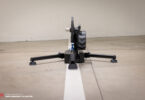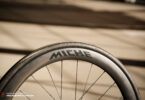Redshift ShockStop suspension seatpost and stem in review
Suspension components like those from the Redshift ShockStop system are experiencing a bit of a renaissance. The claimed benefits are simple: more comfort, particularly on long rides or bumpy gravel routes. But what compromises will you have to accept? We looked at the complete system, consisting of a stem and seatpost.

The Redshift ShockStop system currently consists of two components: the stem and seatpost. Optically, both are relatively conservative, though the angular shapes of the stem and its massive bolts are a little clunky. In contrast, the design language of the seatpost is successfully achieved even with the mechanism hidden inside. Neither component will look out of place on any bike with the sleek black finish and inconspicuous logos. The first impressions are positive.

Redshift ShockStop stem
The design of the Redshift ShockStop stem is surprisingly simple. The extension pivots on a bearing attached to the steerer clamp, with the suspension controlled by elastomers inside. The construction allows you to flip the stem, using it in either the +6° or -6° orientation. Setting the stem up is relatively simple, though requires a little time as you’ll have to remove your bars to access the internals. Inside you’ll find two elastomers that control the suspension. Together with the stem, you’ll receive five different elastomers in different stiffnesses. Combine these in different ways and you can adjust the stiffness in 10 kg steps (body weight) to suit you.

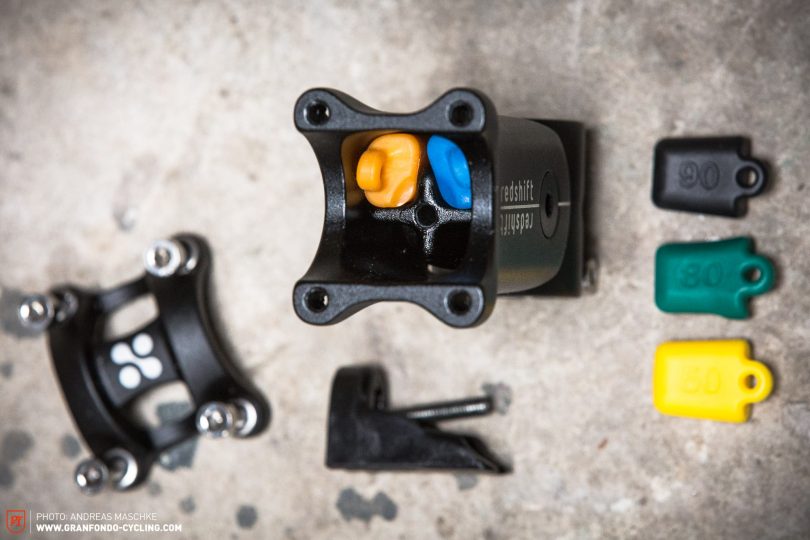
Finding the right combination of elastomers for your personal riding style and preferences takes a little while. The more you ride in a certain position on the bars, the easier it will be. However, if you constantly switch up your position, you’ll have to make some compromise. A soft tune creates a lot of comfort when cruising in the saddle, but results in quite a lot of bob and diving of the bars when braking or standing on the pedals. That makes your hand position harder to anticipate on more demanding terrain with the bars moving in a radius around the pivot, rather than translating up and down as on Specialized’s Future Shock 2.0 system. Unfortunately, control and precision suffer a little as a result. Therefore, a soft setting is only really suited to long, monotonous stretches of gravel. A stiffer configuration reacts mainly to bigger hits, but as a result keeps the bars in a more consistent position while still absorbing smaller vibrations to an extent. However, you’ll not have the same plush flying carpet feel that you do with the softer setup. Nonetheless, due to the improved handling, we still preferred a harder setup. Despite the pivot, we also had no issues with the torsional stiffness of our 100 mm stem at all during our testing.
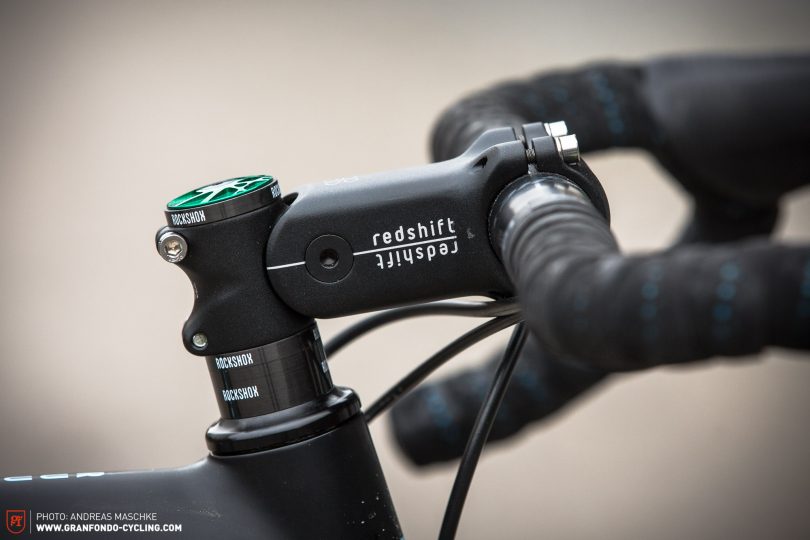
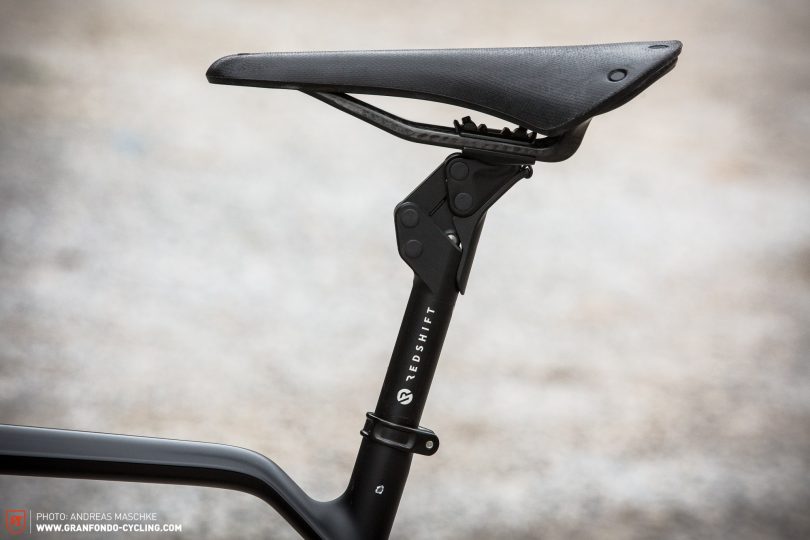
Redshift ShockStop seatpost
Different to the stem, the suspension of the Redshift ShockStop seatpost is controlled by a sprung parallelogram design. The spring preload can be set to your weight with a threaded adjuster at the base of the seatpost. For riders weighing more than 80 kg, you simply slide a second spring inside the main one. The system is incredibly easy to set up and thanks to the preload adjustment, can be finely tuned to your weight as well as being quickly adjusted for additional weight such as a seat pack. Similar to a suspension fork, the system is designed to have some sag. With 20% of the travel used when you sit on the saddle, you effectively float up and down on the suspension as you ride. Redshift suggest that you raise your saddle by 6 mm and push it 5 mm further forward on the rails to compensate for the sag.
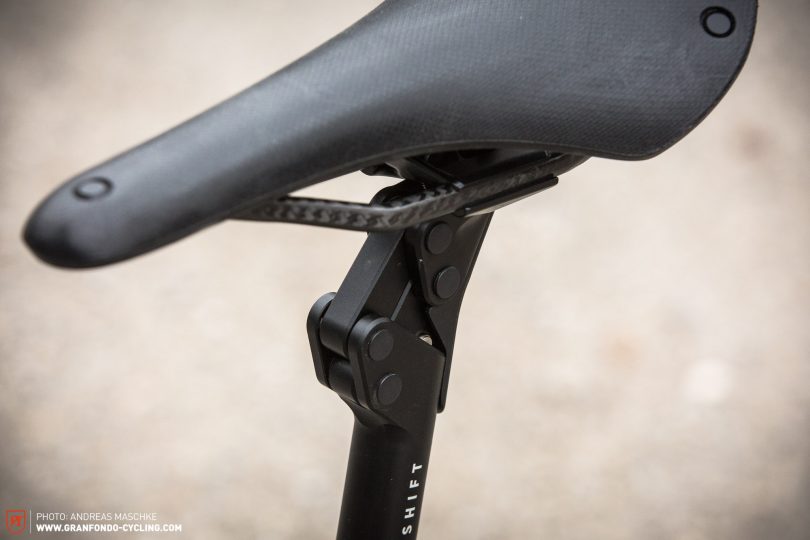
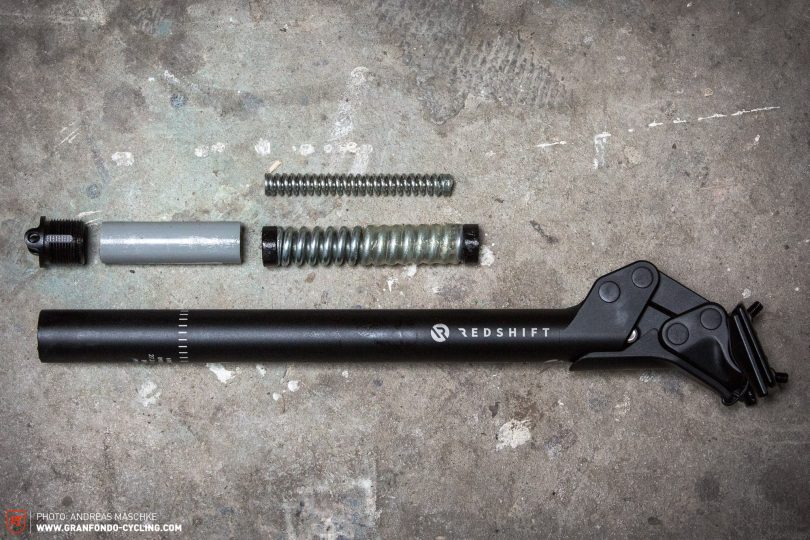
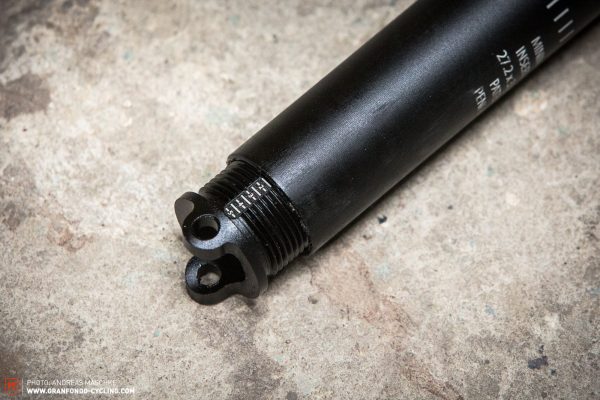
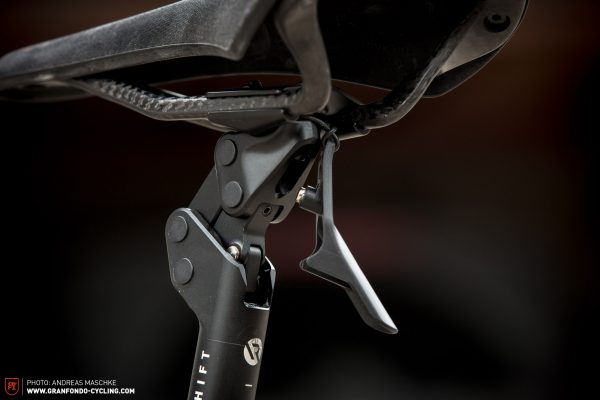
The ride feel of the seatpost might best be compared to a hoverboard. Irregularities on the ground, from the smaller rocks to the biggest potholes, are swallowed up and you only really notice what you’re riding over via the feedback through your feet. However, it takes a little while to unlearn the habit of taking your weight out of the saddle when you see rough terrain ahead. To begin with, you’ll have to pay attention to staying seated, but manage that and you’ll quickly discover what this seatpost is all about. While the Redshift ShockStop seatpost doesn’t have any additional damping as you’d expect with a suspension fork, thanks to the actuation mechanism and friction of the greased piston that pushes the spring, the seatpost exhibits some inherent damping. It effectively strikes the balance between being too slow or too fast.
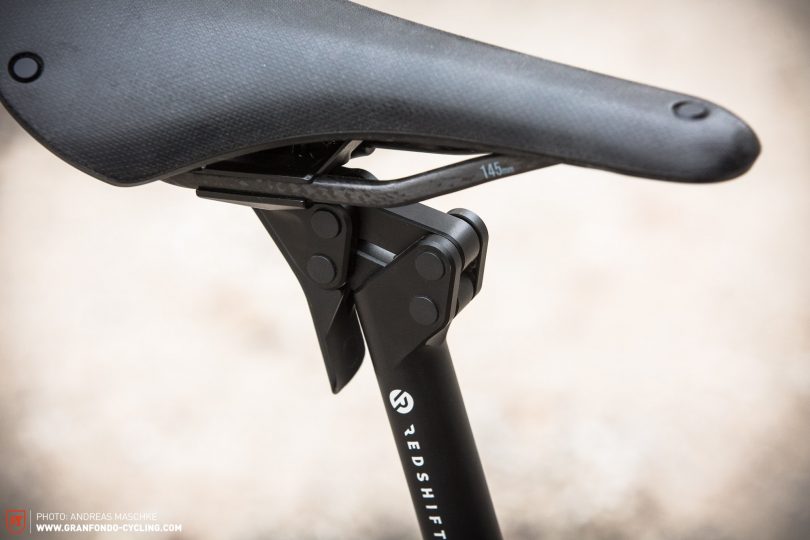
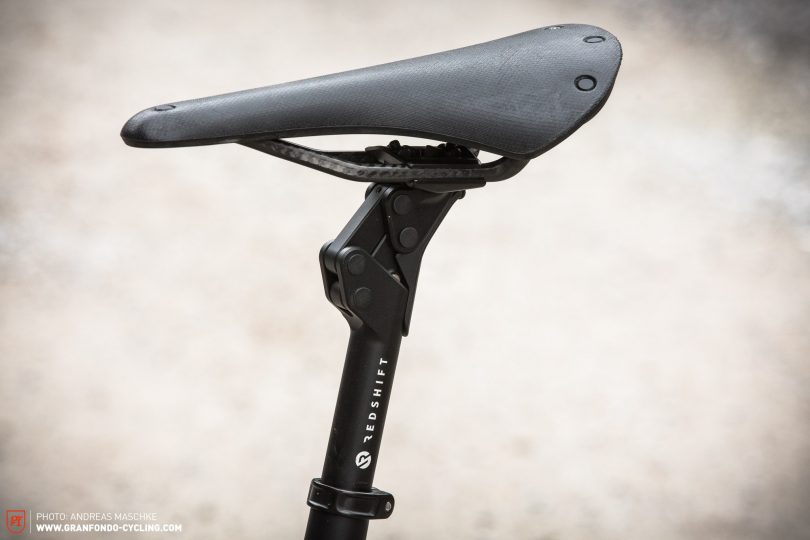
We do however have to mention two problems. Firstly, the saddle height and distance of the saddle to the bars changes noticeably when the suspension compresses (up to 20 mm change in height and 10 mm increase in distance), which can be a little distracting or disturbing while riding, depending on how sensitive you are to it. On rougher terrain, the effect is less pronounced as the bike itself is already moving around a lot more. The second negative. You’re less able to ‘push’ against the saddle as the seatpost reacts to the pressure and immediately compresses. That’s particularly noticeable on steep uphills. If you increase the preload of the spring, this effect can be reduced but the suspension becomes stiffer and less sensitive. It will be worth spending some time experimenting with different settings, and thanks to the easy adjustability, that should be quick to do. We found a slightly stiffer setup without any sag to work best for us. This gives you more purchase on your saddle on climbs, while the seatpost still swallows all the bumps that would otherwise buck you out of place. After two months of use, we haven’t noticed any lateral play in the mechanism or anything else of concern.
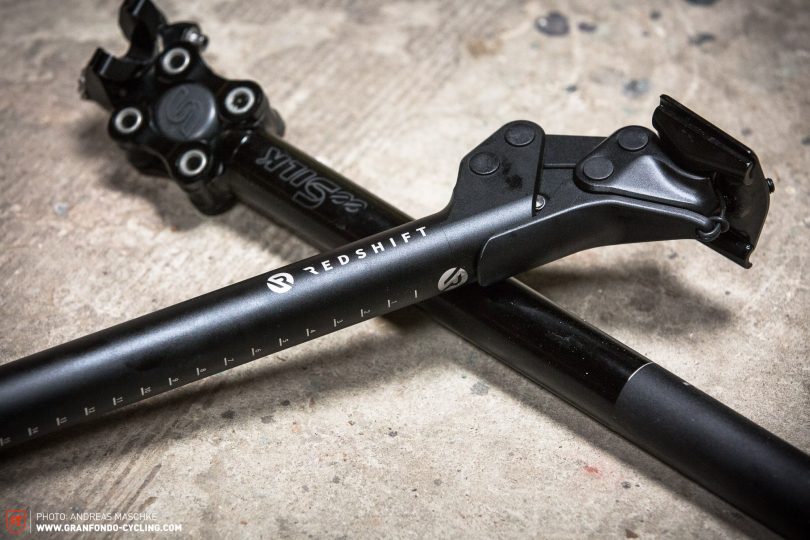
Redshift ShockStop vs. Cane Creek eeSilk
Both seatpost are only available in a 27.2 mm diameter and 350 mm length, and given that both offer a form of suspension, comparisons are inevitable. The Cane Creek eeSilk uses an elastomer for suspension and is more oriented towards sporty riding. The travel is much less noticeable and primarily designed to absorb smaller vibrations while taking some of the sting out of bigger hits. The saddle height changes only minimally, support on climbs is good and the seatpost weighs just over half (292 g) of the Redshift (565 g). Additionally, you can also fit a Di2 battery inside the eeSilk. For a 50/50 mix of road and off-road riding, you’ll be best served here.
Depending on the preload, you can achieve a similar setup with the Redshift ShockStop seatpost but its main purpose is to maximise comfort. It aims, similar to mountain bike suspension, to keep the rider floating and is better suited to riders who are spending 90% of their time off road and who are more interested in covering large distances than achieving the fastest times. Thanks to the easy adjustability of the seatpost, it’s also easy to set up for different uses, for example carrying saddlebags. However, it’s roughly twice the weight of the eeSilk and can’t hold a Di2 battery. Even though the length of the two posts is the same, the ShockStop has a smaller minimum insertion depth, meaning it can sit 25 mm higher than the eeSilk.
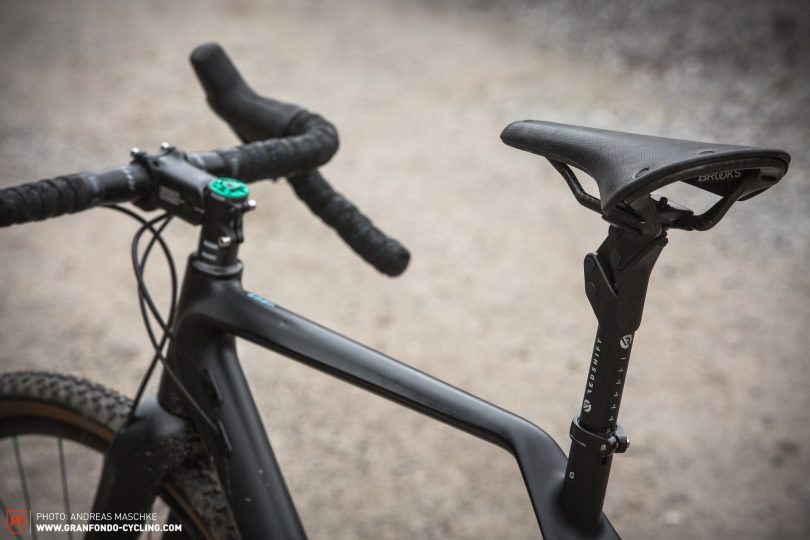
Summary
Neither component in the Redshift ShockStop range is particularly lightweight, but instead both offer great versatility. Depending on how you choose to set them up, they can generate lots of comfort, but also be used for more sporty riding. It’s just the constantly changing saddle position on the seatpost (with a softer suspension setup) that might lead to some irritation while riding. Both components look good and function effectively and it’s especially on long rides that the extent to which the Redshift ShockStop system takes the load off your hands and seat becomes noticeable.
Tops
- unbelievable comfort
- slim, unobtrusive look
- versatile
- tunability of the seatpost
Flops
- heavy
- changing saddle height and distance to bars
Tester: Andi
Duration: 2 months
Price: € 149.99 (stem), € 229.99 (seatpost)
Weight 271 g (stem, 90 mm), 565 g (27.2 mm, 350 mm)
More info: redshiftsports.com
Did you enjoy this article? If so, we would be stoked if you decide to support us with a monthly contribution. By becoming a supporter of GRAN FONDO, you will help secure a sustainable future for high-quality cycling journalism. Click here to learn more.
Words & Photos:


